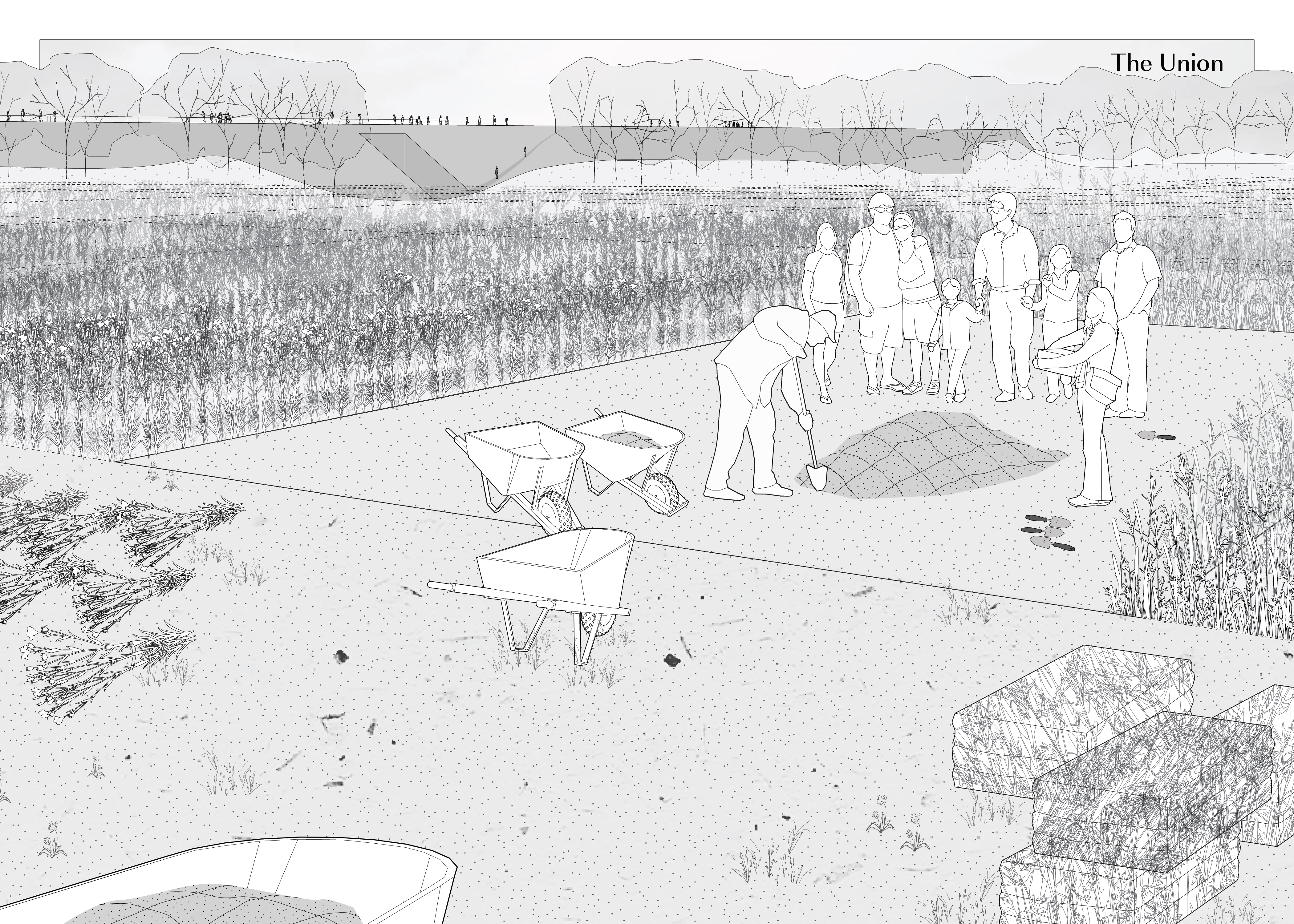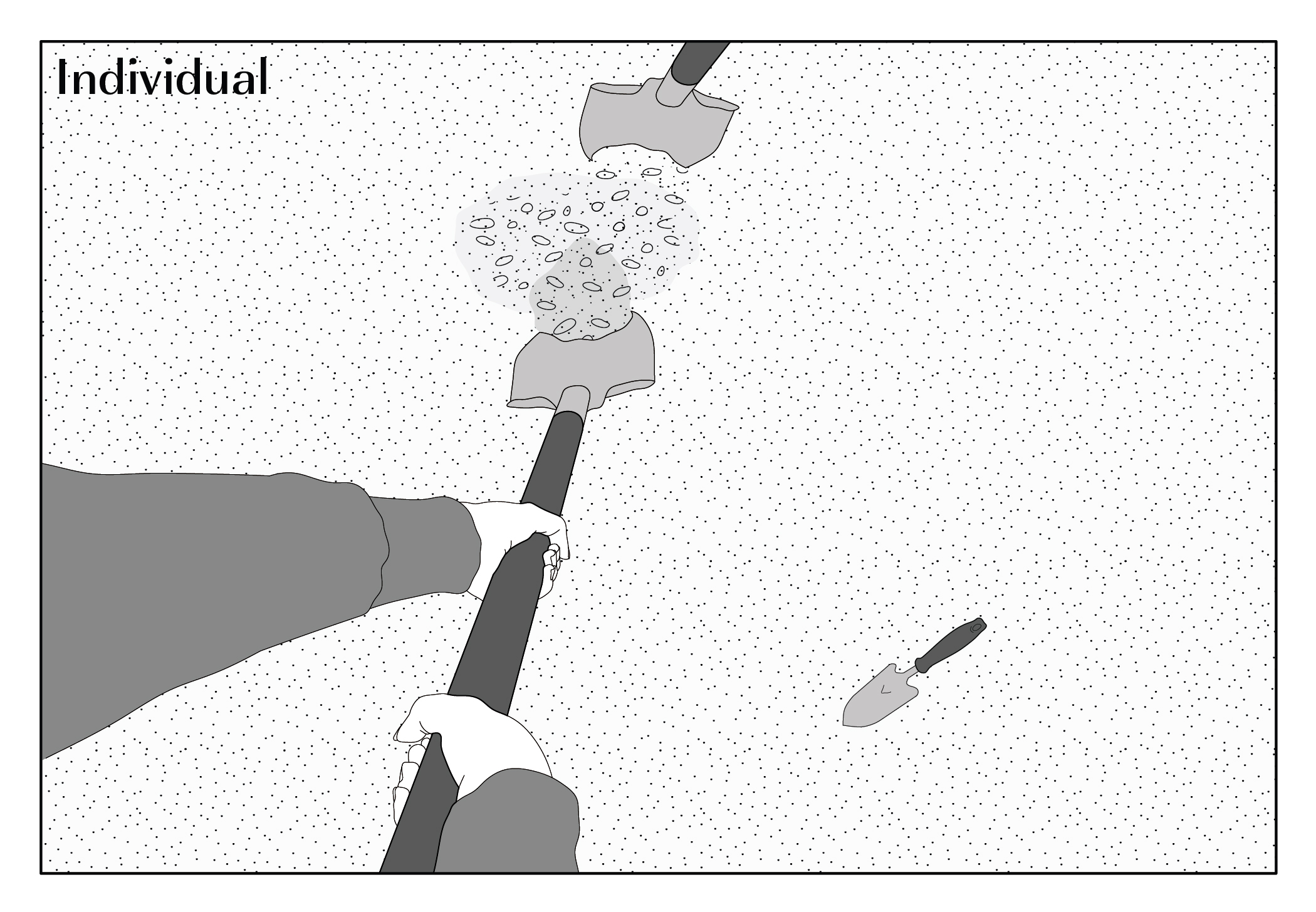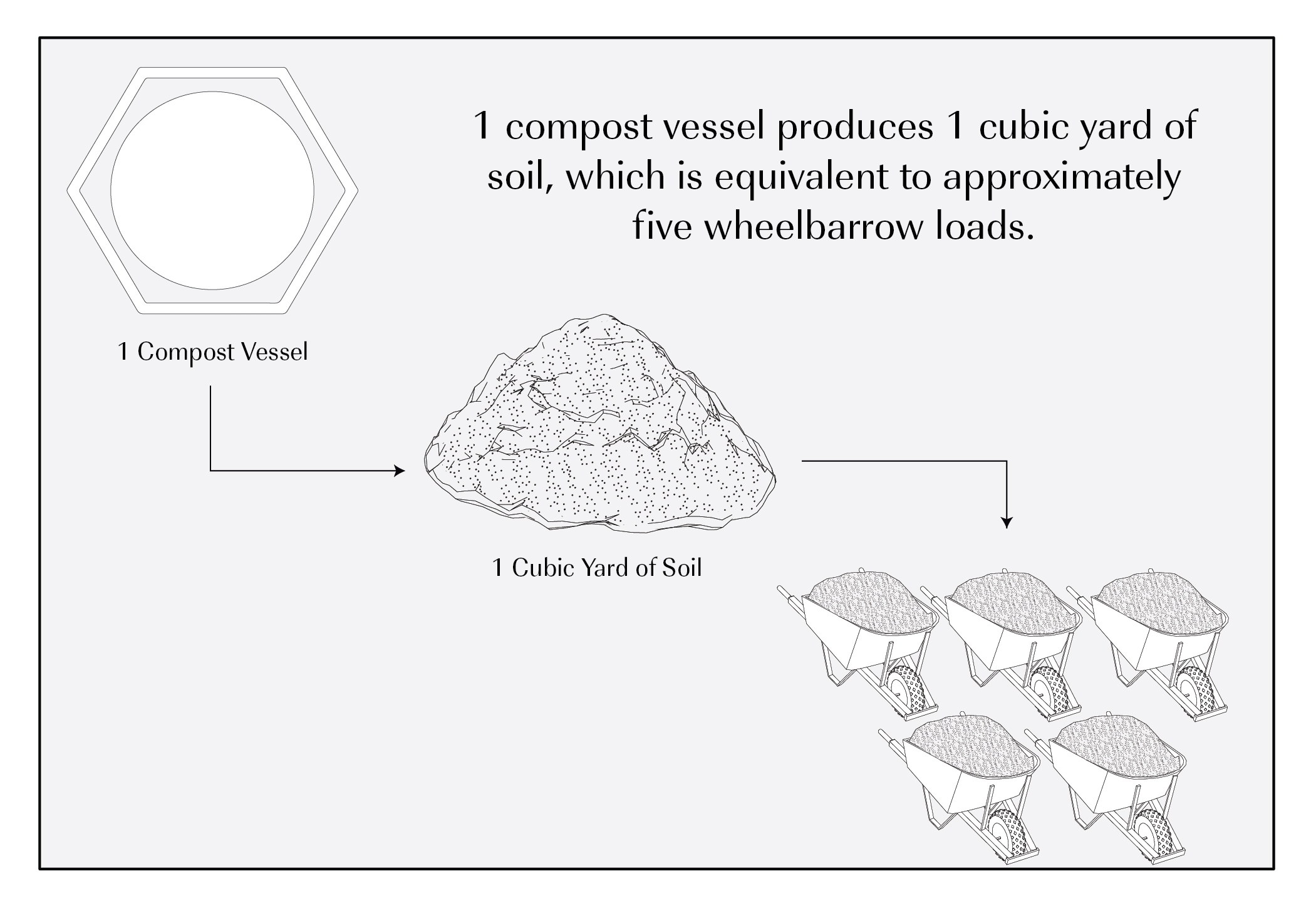Restful Deposition
Advised by: Professor Jill Desimini
Collaborators: Chelsea Kashan, Chloe Soltis

By 2050, Boston, Massachusetts will be out of space to bury their dead. This emerging underground housing crisis had led us to propose a project that builds land in Dorchester.


We adopt a burial practice that transforms the human body into roughly one cubic meter of soil. This rich soil will be spread and piled at strategic points around the city. These mounds have their own individual capacity to hold moisture, vegetation, and memory, and represent a restfulness that accumulates differently.

How might reading the depth of urban accumulation, with its multifarious capacities for erosion and compaction, history and memory, guide a new geologic layer for the city? We foreground these layers of accumulation that influence how to build land with the city, its people and its deceased, and with the tiny squiggly things that live within it.
This project adopts a method of burial that does not take space, but rather, contributes to the deposition of memory, history, bacteria, and culture that merge with the layers of Dorchester’s soil.


We situated our two main project sites among the existigng network of cemeteries in Dorchester. At these sites, we explored the poetic and productive application of the soil that, unlike the cemetery, activate the surrounding streets, businesses, and communities through the design of a memorial plaza and market and through the growth of specific crops at the scale of an urban farm. We are taking the cemetery from outside the city, seemingly bound and static, to something embedded in the pulse of the city.




Although these play out two different spatial expressions on how to pile and spread this soil, we see restful deposition as a distributed network that can transform the city through a process of individual choice-making - one that builds back urban soils and results in the formation of collective memory.






CHOICE CARDS
The decision of how one rests relies on a set of choices. These choices are the main drivers for how these sites evolve over time and have been distributed into four strategic selections: Materials, Soil Movement, Ceremony, and Microclimate. Each selection has a set of cards that have spatial and material implicationsand when combined produce not only a unique place of rest for the individual, but a new geologic layer benefitting the collective.






























To reiterate, we are proposing a process that builds land in Dorchester as a means to center death in urban life, yet still acknowledge that the decision of how one rests remains an individual decision. This decision has the capacity to build land, integrate and accumulate soil, reprioritize urban streets and give back to the city, representing a restfulness that accumulates differently.
IN-PERSON TESTS



COVID LOCKDOWN ZOOM FUN



Poem by Aracelis Girmay titled Elegy
What to do with this knowledge
that our living is not guaranteed?
Perhaps one day you touch the young branch
of something beautiful. & it grows & grows
despite your birthdays & the death certificate,
& it one day shades the heads of something beautiful
or makes itself useful to the nest. Walk out
of your house, then, believing in this.
Nothing else matters.
All above us is the touching
of strangers & parrots,
some of them human,
some of them not human.
Listen to me. I am telling you
a true thing. This is the only kingdom.
The kingdom of touching;
the touches of the disappearing, things.
︎︎︎